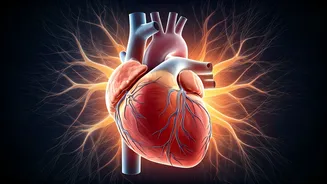Defining Winter Blues
The transition to shorter days and colder temperatures often brings a sense of melancholy. While many people experience the "winter blues," characterized
by a temporary dip in mood, it's crucial to differentiate these feelings from a more serious condition. Experts highlight the significance of not dismissing persistent low moods during the colder months. Seasonal Affective Disorder (SAD) is a specific type of depression associated with changes in the seasons. It's often linked to the reduction in sunlight exposure, which can disrupt the body's natural rhythms. The National Institute of Mental Health notes that the winter blues improve as daylight hours increase. Approximately 0.5 to 2.4 percent of people in the United States are affected by SAD, with young adults and women experiencing it more often, particularly in regions farther north.
Symptoms of SAD
Identifying the symptoms of Seasonal Affective Disorder is crucial for seeking appropriate support. SAD typically begins in late fall or early winter, with symptoms lessening during the spring and summer. Common signs include a persistent feeling of sadness or low mood for extended periods. Individuals with SAD may also experience low energy and feelings of sluggishness, which can interfere with daily activities. Fatigue and a lack of energy are also significant indicators, making it challenging to maintain regular routines. Another symptom is oversleeping, with individuals finding themselves sleeping far longer than usual. Changes in appetite often occur, with many people experiencing cravings for carbohydrates and overeating, potentially leading to weight gain. Social withdrawal is another key symptom, as people tend to isolate themselves. Feelings of hopelessness and unworthiness may also arise, profoundly affecting the person’s outlook on life.
Treatment and Relief
If you are concerned about your feelings of low mood, especially if they align with the symptoms of SAD, it is important to take steps to address your health. Fortunately, there are effective strategies to find relief and improve your well-being. Light therapy is a common treatment for SAD, using special lamps to mimic natural sunlight, which can help regulate mood and energy levels. Many people find that light therapy helps to regulate their sleep and mood. Additionally, medication, such as antidepressants, may be prescribed to help manage symptoms. Beyond medical interventions, lifestyle changes can significantly impact SAD symptoms. These include regular exercise, which boosts mood and energy, along with a healthy diet. Maintaining a consistent sleep schedule and finding social support are equally important, as social interaction can combat feelings of isolation. For further assistance and support, consult with healthcare professionals to get the best treatment plan to support your health.











